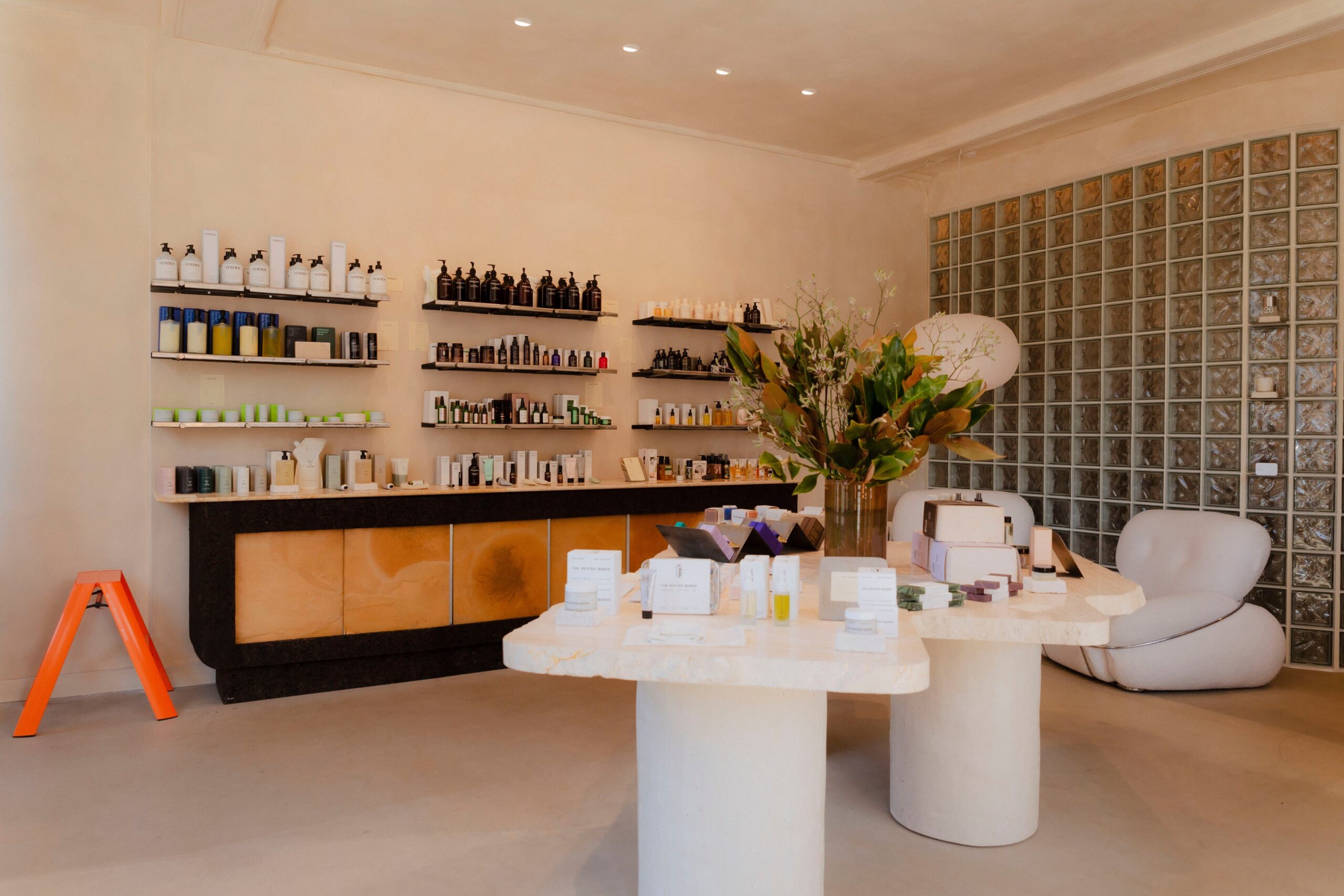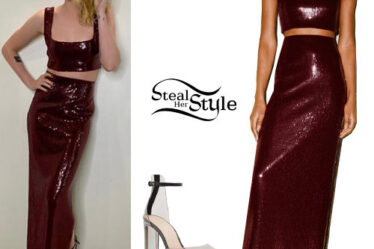
A storm cloud looms over the indie beauty retail world.
So-called “cool girl” retailers are often small in footprint, but outsize in impact, and it’s been this dichotomy that has seen many endure against the odds of rising rents, increased competition and choosier consumers.
Violet Grey, for example, operates a single shopfront in Los Angeles but is a globally and editorially-respected bastion of cool. The store commands a 630,000-strong Instagram following – almost twenty times as many people as actually live in its West Hollywood locale – and A-List celebrities such as Cindy Crawford and Emma Roberts have both appeared on its editorial channels.
But the tide is turning. Last week, it was revealed that Farfetch, which paid $50 million for Violet Grey in 2022, has put it up for sale. Shen Beauty — a popular Brooklyn spot for niche, clean beauty finds — closed suddenly in August, while wellness store Standard Dose’s website was quietly taken down in October. The bricks-and-mortar location in Nolita never reopened following a pandemic-era closure.
While cult retailers are often the first to spot “next big thing” brands – the then-tiny Space NK launched Nars and Laura Mercier to the U.K market over 20 years ago – and may have die-hard fans, growth beyond a single store is tricky. “Economies of scale are something I don’t think people factor in when developing a retail business,” said Millie Kendall OBE, chief executive of the British Beauty Council, a trade body.
Economies of scale are hard enough in buoyant times, but many consumers are tightening, not loosening their purse strings. A rising cost of living, the resumption of student loan repayments in the U.S and stubbornly high inflation is creating downward pressure on luxury spending. Many indie beauty stores skew high-end, or at least masstige, and their role as curators of cool and niche is looking increasingly precarious as TikTok and other social apps bombard consumers with newness daily.
Competition is also rife, from both other pure players, and from grocery stores and drugstores, many of which continue to premiumise and expand their beauty offering. In the U.K, the chain Sainsbury’s — best-known for affordable groceries — added “Serum Bars” to 106 stores, after forecasting that its customers will buy enough this year to fill five Olympic-sized swimming pools.
A new value proposition
In addition to under-the-radar brands, indie beauty retailers often offer more when it comes to values. Many have a clean or sustainable promise, or products hand-picked for Black shoppers – Goop, Credo Beauty and Thirteen Lune, respectively, for example. Catering to an underserved community can forge strong loyalty and trust between customer and retailer, and give brands something of a halo effect.
For Helen Reavey, founder of clean hair care line Act + Acre, indie retailers offer an avenue to potential superfans. “[Customers] are just so loyal to the store. Not only will they see something new and want to try it, they also want to be the one to introduce their friends to it,” said Reavey. Act + Acre is stocked in Goop and Free People, in addition to being featured in select Sephora stores, and Reavey says indie stores have real loyalists. “We often do three or four times our usual sales if I come in store for an event,” she said.
But a niche can sometimes be too small. “How sustainable is it to keep supplying a very small sector?” warned Jill Standish, head of Accenture’s retail industry group. There’s also the fact that discovery is moving online, noted Lisa Payne, head of beauty at trends agency Stylus. “There has to be something there for the customer that they haven’t seen before,” she said. The proliferation of forums like Reddit’s /r/SkincareAddiction and dedicated online communities means that education happens while shoppers browse on their phones at home – and if they see a brand they like, they can interact with the company directly and petition for wider shipping, without needing to wait for a retailer.
An always-rocky road
Getting off the ground can be difficult. Kendall, who previously co-founded the cult retailer Beautymart in 2012, said retailers are squeezed on everything from margins to procurement. Finding brands who want to be stocked on your shelves isn’t hard, but when it comes to purchasing power, founders often can’t find the volume needed to satisfy a minimum order quantity. Retailers also usually have to pay for stock upfront, which can cause cash flow issues until all the product is sold through to consumers.
Managing relationships with brands is one thing, but many companies use distributors, adding in another layer of complication and often higher margins, explained Kendall. “Every time somebody touches the product, assume that that’s going to cost you money,” she said, adding that Brexit-related customs procedures had made things even more onerous for British retailers.
There’s also a lack of start-up capital. Investors tend to be wary of retailers, as there’s no intellectual property with a retail concept – something Kendall and her co-founder, Anna-Marie Solowij, learned the hard way. Their concept was inspired by Japanese beauty stores, and stocked niche finds like exfoliating bath towels and cotton buds loaded with cleansing olive oil. “Before we knew it, our model was copied,” recalled Kendall. “Investors look at your model and wonder what they’re investing in, because it can’t be protected.” Beautymart shuttered in 2018.
Still, many founders like to gamble that they can beat these odds. Lisa Targett Bolding and Marijke Adderley opened Big Beauty, an indie retailer in London’s hip Hackney district in May. Stocking brands who share their anti-waste ethos, Targett Bolding and Adderely’s vision is more mom-and-pop than megastore. The line-up includes indie favourites like Haeckels, The Nue Co and Votary.
“We’ve seen for a lot of small brands that they really do need a physical retail presence,” said Targett Bolding, who previously worked in advertising. Her co-founder is a nutritionist and makeup artist.
Other founders are going for a second wind. In October, Larissa Thomson, the co-founder of clean beauty retailer Onda Beauty, purchased her business back for $220,000 from biotech company Amyris after it entered Chapter 11 bankruptcy. Amyris had acquired Onda Beauty for $4.9 million in 2022.
The store re-opened in New York’s Tribeca a couple of weeks later. Writing on Instagram, Thomson described herself as the sole proprietor, noting that she “care[s] deeply for the community and about providing the best experience possible to all our clients and staff.”
New ways to pop up
Indie retailers may not be able to compete with big-box retailers on promotional discounts and loyalty schemes, but they can find other avenues to entice shoppers in. Big Beauty, Onda Beauty, and the Parisian chain Oh My Cream, which recently set up shop in London, offer facials and other beauty treatments, often with otherwise fully-booked, big-name practitioners.
There’s also the community events Act + Acre’s Reavey mentioned, which in her brand’s case, included bespoke scalp scans. Big Beauty recently hosted celebrity hairdresser and brand founder Larry King in store. “[Larry] said that out of any retailer event he’s ever done, we had the most engaged group of people,” recalled Targett Bolding.
Pent-up demand from consumers still exists, said Payne, but growth takes time. For Big Beauty, Targett Bolding says their focus is on repeat customers. “We’re really trying to drive up retention of customers, as opposed to trying to acquire customers,” she said, noting that they can’t yet compete on digital marketing. As Kendall pointed out, even big box chains have to go slow sometimes: “Sephora re-entered the U.K in March of this year. They still only have one store open.”



